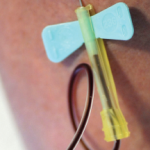CHICAGO—In systemic lupus erythematosus (SLE), most types of severe pulmonary manifestations are relatively rare, but it’s crucial they be caught because of the potentially dire consequences, said Richard Silver, MD, professor in the Rheumatology Division at the Medical University of South Carolina, Charleston, at the 2018 ACR/ARHP Annual Meeting. Pulmonary Manifestations Parenchymal disease—seen in the…







